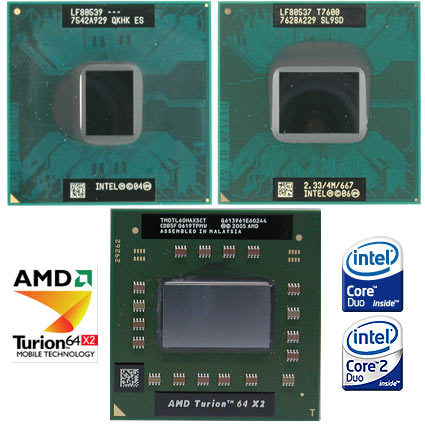Dual Core Notebook CPUs Explored
Conclusion
Due to platform constraints and processor availability issues, the new Notebook CPU charts are not yet as comprehensive as the desktop CPU charts. Even so, they already are a good basis for comparing AMD's mainstream Turion 64 X2 processors with Intel's Core Duo T2000 and T7000 series Core 2 Duo. We've had several Core Duo processors in our labs because we used them for various low-power PC articles, which made the Intel benchmarking easier. We will follow up with the T5000 series and more AMD processors, and also add some single core processors, so you can answer the question of whether it makes sense to replace a single core notebook with a dual core model.
Adding game benchmarks is practically impossible at this time, because the graphics solutions offered on the notebooks are different from what are used in desktops. Aligning the graphics solutions for both test systems is rather difficult, which is why we didn't include graphics benchmarks.
Intel's Core processor family is rather dominant, and clearly offers better performance than the Turion 64 X2 family. If performance is what you're looking for, AMD's Turion 64 X2 is hardly an alternative. However, performance depends very much on a mobile computer's particular configuration: memory size and speed, hard drive spindle speed and the graphics subsystem (discrete vs. shared graphics) have quite an impact on the result. Last but not least, keep processor performance in perspective: weight and battery runtime may be even more important to you anyway. In the end, we consider it very important to compare complete notebooks (and their costs) rather than focusing on CPU performance too much.
Join our discussion on this topic
Get Tom's Hardware's best news and in-depth reviews, straight to your inbox.

Patrick Schmid was the editor-in-chief for Tom's Hardware from 2005 to 2006. He wrote numerous articles on a wide range of hardware topics, including storage, CPUs, and system builds.

